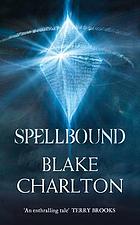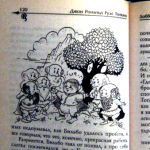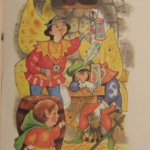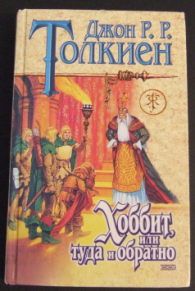2013: The Year in Conlanging
This past year had some great conlanging activity. Here’s a round-up of some of the highlights:
- Games of Thrones, Season 3, premiered in March. With this season, we got a little less Dothraki but also go to hear High Valyrian thanks to David J. Peterson. Especially with the awe-inspiring episode And Now His Watch is Ended! Dracarys!
- Also, thanks to David, we got conlangs in the new Syfy TV series Defiance which premiered in April. Castithan and Irathient got a following rather quickly!
- Man of Steel, released in June, featured Kryptonian created by Christine Schreyer.
- The opening of the LCS Lending Library in September (Edit: added 12/27/2013)
- In November, Thor: The Dark World was released which featured extensive dialogue from Malekith and Algrim/Kurse in David’s Dark Elvish (or Shiväisith).
- Also in November, Mark Rosenfelder (aka Zompist) published his follow-up to the LCK and Advanced LCK: The Conlanger’s Lexipedia.
- In 2013, Zompist also worked on the the conlang for Serpent’s Tongue, Sehimu Thinara. His blog post includes a link to a grammatical sketch of the language.
- The Hobbit: The Desolation of Smaug was released in December with quite a bit of dialogue in Elvish and Orkish.
- It was also announced that David would be doing the alien language for the CW TV series Star-Crossed.
Have I missed one? (Undoubtedly.) Feel free to add a comment to this post!
Happy conlanging in 2014!
2012: The Year in Conlanging
It seemed to me that there was a flurry of conlang-related activity during the latter part of 2012, so I decided to take a look back and see if any other significant events in conlangs and conlanging took place this past year. Turns out, there were quite a few. I’m sure I forgot any number. Feel free to add others as comments to this post.
Enjoy the list and happy conlanging in 2013!
- John Carter, based (loosely) on the Edgar Rice Burrough’s series of novels, premiered on March 9, and featured a Barsoomian (Martian) language created by Na’vi creator, Paul Frommer. The film touched off a series of posts on this blog on the Barsoomian language.
- Also back in March, David Peterson (creator of Dothraki, LCS President, and all-around good guy) did an AMA (Ask Me Anything) on reddit.
- Mark Rosenfelder (aka Zompist) published his Advanced Language Construction Kit in July. Zompist’s online Language Construction Kit continues to be a good first stop for budding conlangers.
- Dr. Christine Schreyer’s ANTH474 class (Pidgins, Creoles, and Created Language) at the University of British Columbia, Okanagan Campus, was offered in the Spring 2012 semester. Yours truly had the honor of speaking (via Skype) to the class on November 1 about the LCS, the Esperanto, Elvish, and Beyond exhibit, and my own conlanging efforts. Through her active twitter feed and the hashtag #ANTH474, we were all able to interact with the class.
- On October 4, Dothraki gets a shout-out on Season 9, Episode 3 (Andy’s Ancesry), of NBC’s The Office (video). David Peterson himself blogged about the epidose and even canonized the noun-verb compound concept for the language using Dwight’s example.
- Also in October, the first Klingon wedding to occur in the UK took place. Neatorama has posted video coverage (along with some tlhIngan Hol).
- On Novemer 10, 2012, Pete Bleackley started the Conlang Tip Exchange over on Google+.
- Registration for the 5th Language Creation Conference opened. LCC5 will take place on May 4 & 5, 2013, in Austin, Texas, and presentation proposals are still being accepted.
- A Klingon Christmas Carol was performed during the month of December in Chicago at the Raven Theatre by Commedia Beauregard. According to its Wikipedia entry, the play “was written by Christopher O. Kidder and Sasha Walloch and was originally translated by Laura Thurston, Bill Hedrick and Christopher O. Kidder. Additional content and translations were provided by Chris Lipscombe.” The 2012 production received positive reviews like this and this. Qapla’!
- On December 3, Stephen Colbert kicks off Hobbit Week on The Colbert Report with “Elen sÃla lumenn’ omentielvo.”
- The Hobbit: An Unexpected Journey, the first of Peter Jackson’s planned prequel trilogy, opened on December 14. The film featured dialogue in Sindarin and an Orcish dialect. As of December 31, the film has grossed $360,903,000.
- The idea of creating a new word for your conlang on every day of December was inaugurated by Mia Soderquist on Twitter with the following tweet on November 21: “I am suddenly inspired to create a common word for each day in December, just to start filling more obvious gaps.” Leland Paul Kusmer suggested “Lexicon December = Lexcember, perhaps?” and thus #lexember was born.
- On December 24, Joshua Foer‘s article (Utopian for Beginners) on John Quijada and Ithkuil was posted online at The New Yorker. Subsequently, a podast with Foer was posted (Out Loud: Unspeakable Language) that touched on aspects of the original article.
New Titles from Oxford University Press: A Conlanger’s Review
My reader’s copies of two new books from Oxford University Press have been languishing for some time waiting for me to review them. My original plan was to do in-depth reviews for each for Fiat Lingua as I did for From Elvish to Klingon. That work was directly relevant to conlanging, and a full-length review was easily written. The one’s I’ve recently received are not directly related to language creation, but they do provide some interesting reading and can be helpful for conlangers. That being the case, I wanted to at least review them and post to this blog.
Julie Coleman’s The Life of Slang (Oxford University Press, 2012) 


 provides a very thorough examination of that aspect of language. The author looks at slang in English across time, over a wide geographic area, and throughout various levels of society. The first chapter looks at what slang is and what slang isn’t. According to Coleman,
provides a very thorough examination of that aspect of language. The author looks at slang in English across time, over a wide geographic area, and throughout various levels of society. The first chapter looks at what slang is and what slang isn’t. According to Coleman,
“Words don’t have slanghood: there’s no state of slangness inherent in a word or even in a sense of a word. It’s only possible to identify an individual use of a word in a given context as slang. To work out whether these examples were slang or not, you’d have needed to know who was speaking, who there they were speaking to, where they were, what they were doing, when they were speaking, and what they meant.
This begins to address where I see Coleman’s book’s usefulness for conlangers and worldbuilders. Slang has the potential to be a productive in-world source of vocabulary as well as a way to provide much more depth to conworlds. Thinking of ways to relate unrelated words (or to give your words “folk etymologies”) is also one of the benefits conlangers can get from reading The Life of Slang. For example, Coleman tells the story of the words dent (in the sense of “a hollow impression”), dentist, and dental. Dent is not related to the two tooth-related words although a folk etymology could be understood in that one can “picture the dent left in a car as a bite mark, with the jagged eges of the metal representing teeth marks.” Dent actually comes from the Old English dynt “a stroke or blow with a weapon”* and predates the tooth-related words.
There are a number of ways in which slang can be created (and potentially be adopted into the standard language) and all these can potentially be exploited by conlangers. Slang can come from:
- Changes in meaning
- Changes in function
- Changes in form (e.g., combining forms)
- By abbreviation
- Changes in spelling
Coleman addresses each of these and says, “Most slang words are produced in ways that aren’t particularly different from the ways Standard English words are produced.”
The Life of Slang also provides some alternative societal origins for slang (and thus con-vocabulary). Coleman goes into depth talking about military slang, prison slang, street slang, school/college slang, and cant (the language of beggars and criminals) and flash (the language of thieves). In fact, the chapter on cant and flash language is one of the most interesting ones in the book.
The book addresses both British and American slang and also examines more recent uses of slang like 1337 and jargon used in World of Warcraft. The fact that “words often play a social as well as a communicative function” could readily be taken advantage of in creating a con-vocabulary.
Other slang-related works include Slang: The People’s Poetry by Michael Adams (also author of From Elvish to Klingon and Slayer Slang: The Buffy the Vampire Slayer Lexicon) and Jonathon Green’s 3-volume Green’s Dictionary of Slang. In an effort to provide depth to one’s conlang vocabulary and to one’s con-world, taking a look at the life of slang might be a useful endeavor.
The other book I recently received is the New Oxford Rhyming Dictionary (Oxford: Oxford University Press, 2012) 


 . At first glance, it’s a handy volume for English rhymes but, I wondered, of what use could it be for a conlanger? The 24-page introduction, however, gives a good overview of different kinds of rhyme (e.g., mosaic rhyme, eye rhyme, embedded rhyme, etc.) as well as its place in history. For those thinking about poetry in their conlang, this is enticing reading. The little notes embedded in the dictionary itself can be somewhat eye-opening as well. For example, under the entry for alphanumeric one finds “Create extra rhymes by adding -al to words like atmospheric.” And, yes, orange does not have a full rhyme; however, the dictionary does provide options of challenge and scavenge and the eye rhyme of range. Additionally, as conlangers are usually those who take joy in language in all its interesting manifestations, the New Oxford Rhyming Dictionary can be fun to simply browse and become spellbound with the sound of a word, no matter how absurd.
. At first glance, it’s a handy volume for English rhymes but, I wondered, of what use could it be for a conlanger? The 24-page introduction, however, gives a good overview of different kinds of rhyme (e.g., mosaic rhyme, eye rhyme, embedded rhyme, etc.) as well as its place in history. For those thinking about poetry in their conlang, this is enticing reading. The little notes embedded in the dictionary itself can be somewhat eye-opening as well. For example, under the entry for alphanumeric one finds “Create extra rhymes by adding -al to words like atmospheric.” And, yes, orange does not have a full rhyme; however, the dictionary does provide options of challenge and scavenge and the eye rhyme of range. Additionally, as conlangers are usually those who take joy in language in all its interesting manifestations, the New Oxford Rhyming Dictionary can be fun to simply browse and become spellbound with the sound of a word, no matter how absurd.
Enjoy!
Spellbound by Blake Charlton: A Review

I have finally had a chance to read the sequel to Spellwright by Blake Charlton entitled Spellbound. 

 Â The plot takes place ten years after the events in the first volume, and Nicodemus Weal is on the run. The book introduces a new character, however, and she makes her appearance right from the beginning. The first line of the book, I’ll admit, had me hooked:
 The plot takes place ten years after the events in the first volume, and Nicodemus Weal is on the run. The book introduces a new character, however, and she makes her appearance right from the beginning. The first line of the book, I’ll admit, had me hooked:
Francesca did not realize she had used an indefinite pronoun until it began to kill her patient.
That imaginative wordplay and ingenious (yes, I’ll say it… ingenious) magic system of Charlton’s is back and better than ever:
Francesca used [the runes] in her left forearm to write a few silvery sentences that glowed on her skin. With her right hand, she pulled the spell free. It folded into a short, precise blade.
Spellbound also introduces a new order of magic-users: the hierophants or “wind mages” which use wind and cloth to wield their power. They cast spells slowly (beat by beat of their heart), and Charlton gives an intriguing description of the inner workings of one of their windcatchers:
Inside the windcatcher, hundreds of radial sails were arranged like windmill blades and rotated around a central point. Somehow a hierophant was suspended within the windcatcher. The many sails focused the energy of their rotation into the hierophant’s heart and accelerated its spellwriting. Each augmented heartbeat produced a hundred thousand times more runes that it otherwise would./ This was the hierophantic key to power. Their language was produced only in the heart muscle, was limited to cloth, and melted into a wind when cast. However, they had harnessed nature’s power, transformed the wind into words. From a school of kite-flying hermits on the slopes of Mount Spires, they had grown into the linguistic backbone of a powerful kingdom.
We also get to see much more of kobold culture. The kobolds, with “their midnight skin and blond hair”, can only cast spells in the darkness.
The lycanthropes are a new race of beings, and they prowl the savannah. There is an interesting twist to their role in the story, as well as an unexpected turn of events having to do with the Savannah Walker as well as a ghost that makes a debut.
Although the plot can get overly complicated sometimes, Charlton does a good job of pulling the reader along. His magic system, though, is what I most enjoyed from these two books (and expect from the promised third volume, Spellbreaker). With sentences like “An unseen wartext blasted the ghost’s right arm into a cloud of golden text”, how can anyone who loves language and how it works not be intrigued with making invisible words tangible and full of power.
In closing, I had the great good fortune to see Blake Charlton give a talk at the American Library Association Annual Conference last summer in Anaheim, CA. He was extremely entertaining but also poignant at times talking about growing up with dyslexia and “riding the short bus.” He would go on to medical school and prove everyone wrong that thought he wouldn’t amount to much. I also had the chance later that same day to talk briefly to him at his book signing, tell him I was shocked when he replied to a tweet, and he mentioned that he most enjoyed writing Francesca’s character in the Spellbound novel. Now that I’ve read it, I can see why and his enjoyment shines through the prose.
Looking forward to reading Spellbreaker!
Хоббит, или Туда и обратно
Last week was another book sale at my library. I picked up a Teach Yourself Colloquial Arabic and one other. I found the colloquial Arabic interesting since it did not use Arabic script for the Arabic phrases. Instead, the book uses romanization. This may come in handy when looking for some conlanging inspiration, so that’s now in my personal collection.
The other is the Tolkien’s The Hobbit in Russian: Хоббит, или Туда и обратно. The first thing I noticed was that the cover sported the famous Darrell Sweet painting of Thorin and Thranduil, the Elven King. Not sure if all the copyrights were adhered to, but it’s a handsome picture:
The volume also includes translations of Farmer Giles of Ham, Leaf by Niggle, and Smith of Wooton Major, all with different illustration styles. Farmer Giles includes the well-known artwork of Pauline Baynes. Last year, I passed up a complete collection of The Lord of the Rings in Russian and still kick myself. No, I can’t read Russian, but it’s very interesting to be able to see how names and other items (e.g., maps) are handled in other languages. I know just enough Cyrillic to be able to puzzle out individual words and names. Хоббит, или Туда и обратно is also illustrated in the manner of a children’s book. While The Hobbit could be considered a children’s book, the illustrations seem at odd with the sometimes dark themes of the story. For example, here’s an illustration of the dwarves and Bilbo:  The book also includes some nice maps, such as this one of the Battle of Five Armies:
The book also includes some nice maps, such as this one of the Battle of Five Armies:  (You can see the arrows denoting where the orki are coming from.). Finally, one of the more disturbing pieces from the book are the elves which have wings. Yes, wings:
(You can see the arrows denoting where the orki are coming from.). Finally, one of the more disturbing pieces from the book are the elves which have wings. Yes, wings:  This is obviously the scene with Bilbo finding the way out of the Elven King’s halls through the empty wine barrels. But those wings… That’s a new one. Even so, it’s interesting to get a new perspective on the adventures of Бильбо БÑггинÑ, ГÑÌндальф, Торин and all the rest.
This is obviously the scene with Bilbo finding the way out of the Elven King’s halls through the empty wine barrels. But those wings… That’s a new one. Even so, it’s interesting to get a new perspective on the adventures of Бильбо БÑггинÑ, ГÑÌндальф, Торин and all the rest.
New Additions to the Library (Finally)
I have finally made some long overdue additions, corrections, and overall housekeeping to The Conlanger’s Library. You can see the primary ones on the “Most Recent Updates” block on the homepage. I have a number of other things I’d like to do to the Library’s overall look, etc., but we gotta start somewhere.
You’ll also notice that the countdown to St. Hildegard’s Day is at 70 days. I had made a St. Hildegard’s resolution last year, so we’ll see if I can fulfill that. I do have a new Kryslan blog that I can use for information on Dritok. We’ll see if the Fates are kind.
Happy conlanging!
Spellwright: A Conlanger’s Review
I just finished Spellwright by Blake Charlton (Tor, 2010) 

 . The story follows the adventures of Nicodemus Weal, a “spellwright” who can’t spell. The most fascinating thing about the world that Blake Charlton has created is his novel system of magic where spells are formed within one’s body or peeled from the pages of a book. The master wizard, Agwu Shannon, is a great well-rounded character and could probably have sustained a book of his own. There are lots of other secondary characters and intriguing plots. But, since this is a conlanging blog, let’s see how Charlton handles language.
. The story follows the adventures of Nicodemus Weal, a “spellwright” who can’t spell. The most fascinating thing about the world that Blake Charlton has created is his novel system of magic where spells are formed within one’s body or peeled from the pages of a book. The master wizard, Agwu Shannon, is a great well-rounded character and could probably have sustained a book of his own. There are lots of other secondary characters and intriguing plots. But, since this is a conlanging blog, let’s see how Charlton handles language.
The first thing to know about language in the world of Nicodemus Weal is that language is Power…literally. The magical languages include Common, Numinous, Magnus, Wrixlan, Pithan, and the all-mighty Language Prime. One could think of these magical languages almost as computer code or prose. One who knows one of these languages can form the sentences, phrases, and paragraphs within their bodies and construct wonder-working spells. But be careful of misspellings! They can kill you. That is Nicodemus’ problem. He is a cacographer or one who is magically dyslexic, inadvertently misspelling even the simplest of spells.
To followup on the idea of writing instructions out of magical languages: In one section, a “bookworm” (a monstrous creature that eats magical texts or “malicious language that invades manuscripts. They eat all the prose and use it to make copies of themselves”) is caught and its text is parsed to figure out where it was supposed to return (i.e., it’s been programmed and its captors are going to re-program it). The book even describes “textual intelligence” as a required string of instructions: “if this happens, then do that; if that does not happen, then do this…”
The way Charlton described the magical languages is very evocative:
- “A sudden, golden jet of Numinous prose exploded…
- “…a bookshelf burst into a molten ball of silvery Magnus.”
- and maybe the best: After a struggle, someone’s face is “crushed by blunt words”
And since these languages all have writing systems to go with them, this could be a hey-day for some inventive con-scripter!
Humans are the primary beings in this world, but there are a Chthonic non-human people who dwelt in the land prior to humans’ arrival. We get one word of their language: tulki = masculine form of “interpreter”.
Charlton also has some fun with the word ghostwriting which is the spell a spellwright can use to exist after death.
Finally, we get the name of a few spells: madide, latere, sceaduganga. The last one, as I read, triggered some sort of Old English ancestral memory or something. So, I set off to check my available online Old English dictionaries. Sure enough, sceadu-genga occurs in Line 703 of Beowulf: Cóm on wanre niht / scrÃðan sceadugenga “In the colourless night, came / slinking the shadow-wanderer. (Click here for a good online Beowulf in Old and Modern English). The spell does indeed allow one to walk in the shadows or, in other words, to become invisible.
So, Spellwright is worth the read. A fascinating magical system, playful use of language, and interesting characters. It does drag a bit in spots being a little overly-reliant on exposition, but the action and overall story make up for these shortcomings. In fact, I thought (after reading it) maybe we should refer to ourselves as langwrights instead of conlangers. Just an idea.
